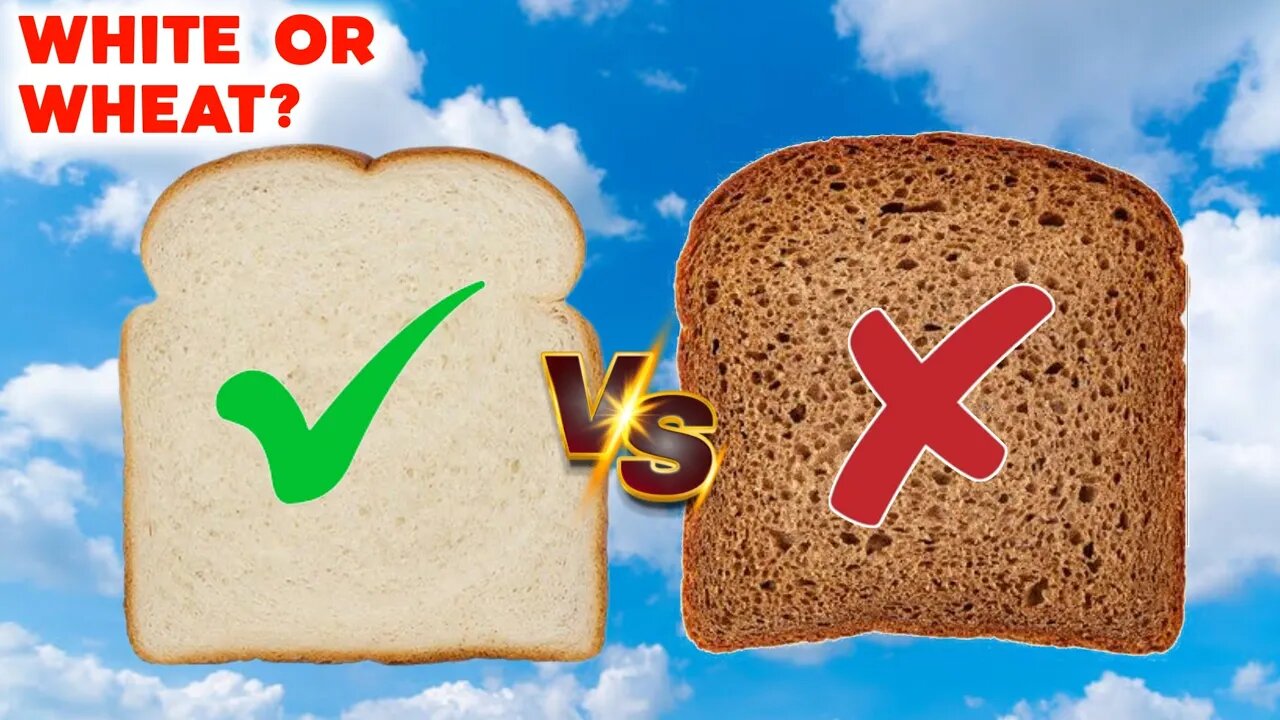Premium Only Content

Is Whole Wheat Bread Really Healthier Than White?
Is Whole Wheat Bread Really Healthier Than White Bread?
Ever wondered if whole wheat bread is truly the healthier champ in the bread aisle showdown? Let’s slice into the debate with a fresh, engaging look at nutrition facts, health benefits, and taste that’ll keep your heartland appetite curious! Whole wheat bread, packed with fiber, vitamins, and minerals, often steals the spotlight as the “healthy” choice. Made from whole grain flour, it retains the bran and germ, delivering 3-5 grams of fiber per slice, which supports digestion, heart health, and blood sugar control, according to Mayo Clinic. This nutrient-dense option also boasts B vitamins and iron, fueling energy for busy days.
White bread, on the other hand, uses refined flour, stripping away much of the fiber and nutrients, leaving about 1 gram of fiber per slice. It’s often enriched with vitamins, but it can spike blood sugar faster, per Harvard Health. Yet, white bread’s soft texture and mild flavor make it a comfort food favorite, especially for picky eaters or classic PB&J moments. Some argue enriched white bread still provides essential nutrients, but it lacks the whole grain benefits tied to lower risks of diabetes and heart disease.
Taste-wise, whole wheat’s nutty depth pairs perfectly with soups or sandwiches, while white bread’s fluffiness wins for nostalgia. Choose whole wheat for sustained energy, but enjoy white bread in moderation. Check labels for added sugars, and let your taste buds and health goals decide!
-
![Mr & Mrs X - [DS] Created Antifa To Push An Insurgency In This Country - Ep 8](https://1a-1791.com/video/fww1/f9/s8/1/k/f/O/j/kfOjz.0kob-small-Mr-and-Mrs-X-DS-Created-Ant.jpg) 1:02:13
1:02:13
X22 Report
5 hours agoMr & Mrs X - [DS] Created Antifa To Push An Insurgency In This Country - Ep 8
129K45 -
 1:13:24
1:13:24
Wendy Bell Radio
9 hours agoPet Talk With The Pet Doc
34.2K39 -
 1:19:30
1:19:30
Game On!
1 day ago $10.43 earnedCollege Football Week 4 Betting Preview!
141K4 -
 26:04
26:04
Artur Stone Garage
4 days ago $2.05 earned$500 Civic: Will It EVER Drive Without Breaking Down?
27.5K7 -
 31:44
31:44
SouthernbelleReacts
2 days ago $3.48 earned“E.T. Phone Home! 🛸 Emotional Mom Style Reaction to E.T. the Extra-Terrestrial (1982)”
44.4K6 -
 20:10
20:10
JohnXSantos
1 day ago $1.56 earnedI Built a FAKE Luxury Brand With $100 In 7 Days
34.6K2 -
 25:24
25:24
marcushouse
6 hours ago $2.98 earnedStarship Test Trouble… and Block 3 Finally Unveiled! 🤯
36.6K8 -
 33:10
33:10
Vedic compatability astrology
5 days ago"The mystery of Austin Muhs Explained"
15.2K1 -
 1:13:26
1:13:26
Squaring The Circle, A Randall Carlson Podcast
12 hours agoSaving The Bees and Healing The Planet!
21.7K1 -
 16:18
16:18
Chris Harden
2 days ago $4.16 earnedCharlie Kirk Utah Reaction | What Locals Are Saying
27.9K13